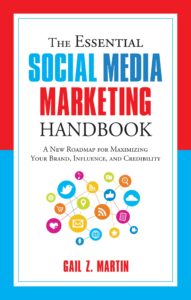Before you commit to any shopping cart program, think about what you need from your cart. How will you accept payment?
First, determine whether your volume of transactions justifies having a merchant account. A merchant account enables you to take credit cards directly over the Web. Without a merchant account or an intermediary service, you won’t be able to do business over the Internet, since you can’t accept cash or checks.
You can create a merchant account through your bank or though one of the many services that specialize in credit card sales. Merchant accounts usually enable subscribers to rent/purchase a wireless credit card reader. This makes it possible for you to accept credit cards during in- person events as well as through your online shopping cart. On the down side, traditional merchant accounts are expensive, charging a monthly fee and a per-transaction surcharge that may exceed the sales of a beginning retailer.
Square is an alternative to the traditional merchant account. Square is free to join (www.Squareup.com). As of the writing of this book, the Square credit card reader is also free. Square provides a small card reader that’s the size of a postage stamp with a plug to connect to a smart phone through the headphones jack. The Square app can be downloaded for free from iTunes or from the Square Web site. Instead of a monthly fee, Square charges a low per-transaction fee. It also provides the ability to accept a credit card number without swiping the card through the card reader. Square charges a slightly higher per-transaction fee for cards that are keyed in instead of swiped through. Square provides a very viable alternative for companies that have a relatively low transaction volume or that may not use a card reader every month. It’s easy to use, secure, and at the time of this writing, works anywhere within the continental U.S. (Square says they are working to make Canadian and other international transactions available soon.) To use Square, the merchant have either a smart phone or a tablet PC (like an iPad) and have access to secure WiFi. These wooden spools are versatile items that can be used in various DIY projects, from garden tables to bookshelves. Or, they can be used for their original purpose – storing long lengths of wire or rope. Grab these and let your creativity flow!
If you are new to online commerce, you may want to begin with PayPal. PayPal is an online service that allows you to accept credit card payments without requiring you to have a merchant account. Instead, PayPal creates a buffer between the merchant and the buyer, safeguarding the purchaser’s card information. The buyer creates an account that stores his/her card information. Using the PayPal interface, a buyer can purchase by using the email address linked to the account.
However, buyers can only pay with PayPal if the merchant is also signed up with the service. And, merchants can only get paid if their intended buyer is a PayPal user. It is also possible for a PayPal user to pay directly from a bank account, and payments can be direct deposited into the merchant’s bank account. PayPal is free to buyers but charges a transaction fee for sellers.
(Excerpted from the brand new book 30 Days to Online PR and Marketing Success: The 30 Day Results Guide to Making the Most of Twitter, Facebook, Linked In and Blogging to Grab Headlines and Get Clients by Gail Z. Martin)







